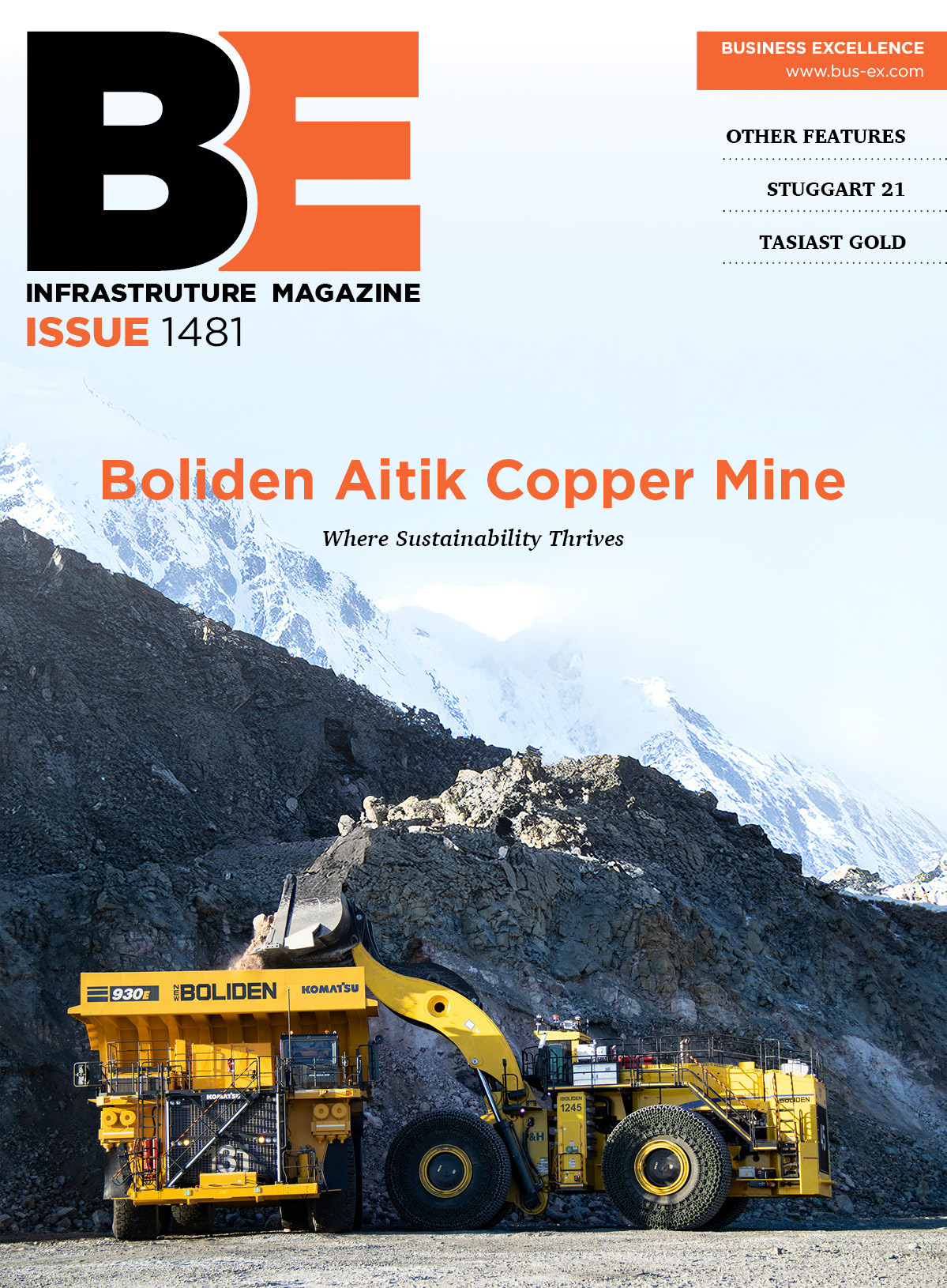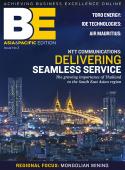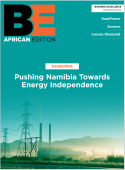The heart of steel
AssmangÔÇÖs properties are in the Kalahari manganese field in South AfricaÔÇÖs Northern Cape Province, which contains some 80 per cent of the world's known high-grade manganese ore reserves, vital to the worldÔÇÖs steel industry. John OÔÇÖHanlon reports on major recent and projected investment at one of AfricaÔÇÖs largest manganese mines.
AssmangÔÇÖs name is a contraction of Associated Manganese Mines of South Africa, as it was originally known when it was founded in 1935. For many years it specialised in manganese and chrome extraction, to which it added iron ore production in the early 1990s. Today it is jointly owned by African Rainbow Minerals Limited and Assore Limited and currently has three operating divisions based on its three commodities: chrome, manganese and iron ore.
Sechaba Letaba is senior general manager at the manganese division, responsible for the companyÔÇÖs Nchwaning and Gloria mines, each of which started production during the 1970s with a projected output of one million tonnes per annum. A second shaft was added to the Nchwaning property in 1981 and early in 2000, Assmang announced an expansion involving the development of a new shaft complex to add about two million tonnes capacity, to make Nchwaning the worldÔÇÖs lowest-cost underground manganese mine, and to extend its lifetime by some 30 years.
This R780 million expansion, including additional treatment capacity, was commissioned in May 2004 and completed in May 2005. Full production from Nchwaning 3 was achieved in February 2006. The complex is serviced by two shafts: a vertical personnel shaft to a depth of 350 metres and a decline shaft equipped with conveyors, through which up to 200,000 tonnes are hoisted every month. ÔÇ£Nchwaning 3 is our future, and we are planning to produce more than five million tonnes a year eventually,ÔÇØ says Letaba. ÔÇ£We are still building capacity towards those targets.ÔÇØ
Nchwaning mine is semi-automated, he explains. The ore is transported from the face, where it has been blasted into four run-of-mine ore bins. Each of these bins is reserved for a different grade. ÔÇ£We sample the rock before blasting and analyse it in labs on the surfaceÔÇöthat is how we know what grade we are getting each time.ÔÇØ From the bins the material goes through below-ground crushers that reduce it to less than 150 millimetres so that it can be conveyed into one of seven underground silos, each of them with a capacity of 2,000 tonnes, already graded according to specific customerÔÇÖs demands.
Accurate grading is an essential part of the process, Letaba emphasises. ÔÇ£Firstly thereÔÇÖs the manganese content, which can be anything up to 48 per cent; however, there are other elements. Some customers want less than five per cent silica, or iron content. Some want moreÔÇöit all depends on what their end product is going to be. For example, for long products like girders and building components that are much in demand as China grows its infrastructure, high silica manganese is a must.ÔÇØ For these customers, consistency is all important, he says. Chinese smelters value South African suppliers like Assmang firstly for the large amount of metal in the ore and secondly for their ability to send them ore that consistently conforms to the recipe they use.
Despite some uncertainty during the recent downturn, manganese is sold on long-term contracts and global demand is expected to be boosted as India moves from being an exporter of manganese ore to an importer. China will continue to be the principal importer, however, and 80 per cent of AssmangÔÇÖs production is sent overseas through Port Elizabeth. The remainder is sent to customers within South Africa, much of it being processed at AssmangÔÇÖs own furnaces at Cato Ridge near Durban, by far the countryÔÇÖs biggest ferromanganese plant.
As production ramped up at Nchwaning, the bottleneck was found in the surface crushing, cleaning and washing facilities. ÔÇ£You can only ship as much as you can handle,ÔÇØ says Letaba. ÔÇ£If anything went wrong on the surface plant it affected our underground operations because then we could not empty the underground bins.ÔÇØ Accordingly the company approached TWP, the leading mining industry project management group, to design and install a new state-of-the-art beneficiation plant at Nchwaning, at a cost of more than R700 million.
The new kilometre-square plant is being commissioned at the time of writing and will come on stream before the end of March 2010. It will make a huge difference to the efficiency of the mine operations, Letaba believes. ÔÇ£The beneficiation plant will not only be very much faster, but it incorporates four silos whereby ore can be stored on the surface. If we can store material on the surface we can keep the underground silos below capacity, and the actual mining operations at the rock face need never be interrupted because thereÔÇÖs nowhere for the material to go.ÔÇØ
This is a highly automated plant, he continues. ÔÇ£That is another big advantage for us. It means we can realise cost savings by virtue of it being much less labour-intensive. Another considerable cost benefit will come from its throughputÔÇöwhen you put higher volume through the plant you cut down your costs. TWP managed all the installation and procurement connected with this plant, based on the specifications we gave them.ÔÇØ The new plant will process 900 tonnes of material per hour, almost double the capacity of the old plant, he says.
The sized and graded manganese ore is loaded onto Transnet rolling stock for the 8,000 kilometre journey to Port Elizabeth harbour where two conveyors deposit it in one of four storage bins with a total capacity of 460,000 tonnes, ready for conveying to the ships. Investment in this vital link has been supported by AssmangÔÇöclearly increased efficiency at the mine needs to be matched by efficient transportation. While not exactly a bottleneck, the current semi-automated loading facility at Nchwaning is an older system than that used at AssmangÔÇÖs iron mine at Khumani, 150 kilometres away.
Though this is still awaiting board approval the next major investment will be in an automated loading system, says Letaba. ÔÇ£The old system is not very efficient and sometimes we encounter problems with the loading profiles,ÔÇØ he says. Any possibility of overloading or unbalanced loading has safety implications in an industry where safety takes centre stage. ÔÇ£We are every bit as much concerned about safety as Transnet is,ÔÇØ he adds. ÔÇ£An automated loading system will make the best use of TransnetÔÇÖs facilities while improving the mineÔÇÖs throughput.ÔÇØ The new system, modelled on KhumaniÔÇÖs, will load the wagons as they slowly but continuously pass below an overhead hopper.
World demand for manganese is certain to rise as steel and aluminium production increases to meet post-recession infrastructure growth. Assmang is concerned not only to optimise its production, says Letaba, but also to be an effective employer and to keep its environmental impact under control. ÔÇ£The companyÔÇÖs strategy is to keep the three divisions operationally separateÔÇöfor example, our skills requirements are different from those of the iron ore division. Decentralisation allows us to make autonomous decisions based on our own market.ÔÇØ









